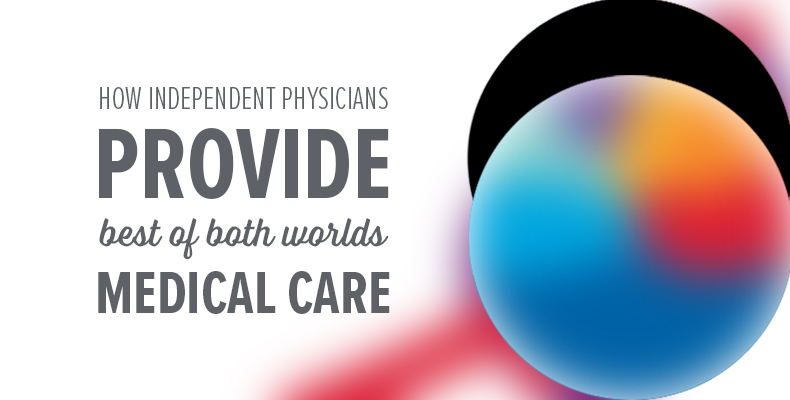 Practicing medicine isn’t what it used to be. Or is it? Many patients today still desire the type of personal care that was more common in decades’ past, according to Dr. Jeremy Luckett, independent physician of Internal Medicine at Vineyard Primary Care, Owensboro, KY. Patients want to make same-day appointments; they want personal attention; they want their doctor to see them in a traditional practice office, in a nursing home setting, or in a hospital, if required.
Practicing medicine isn’t what it used to be. Or is it? Many patients today still desire the type of personal care that was more common in decades’ past, according to Dr. Jeremy Luckett, independent physician of Internal Medicine at Vineyard Primary Care, Owensboro, KY. Patients want to make same-day appointments; they want personal attention; they want their doctor to see them in a traditional practice office, in a nursing home setting, or in a hospital, if required.
Busy physicians must try to meet these demands to stay competitive, while a new generation of patients ushers in a new set of expectations, too. Patients like text alerts about upcoming appointments. They want automated phone reminders. Patients expect access to their lab results on an easy-to-use, confidential portal. “We have to integrate these things that patients expect without losing track of what’s most important—the physician-patient relationship,” explains Dr. Luckett.
The right technology can be very beneficial to both patients and practices alike: it frees up both parties to focus time and attention on the actual care. Dr. Luckett uses the AdvancedMD integrated Electronic Health Record (EHR) and practice management (PM) software to smooth workflow, so automation is maximized where it matters most.
Independence Reigns
As the owner of a thriving independent practice, Dr. Luckett enjoys clinical and administrative autonomy of his business. He intends to continue practicing on his own rather than joining a large healthcare system as he believes in giving patients a choice. Independent practices create healthy competition in the community and allow individual patients to see providers they choose, when and where they choose. Interestingly, according to the Merritt Hawkins Physician’s Foundation 2016 Survey, most physicians, even many who are themselves employed by hospitals, do not believe hospital employment of physicians is a positive trend. The survey found that the number of hospital employed physicians who do not agree that hospital employment of physicians is a positive trend rose from 44.7% in 2014 to 49.9% in 2016 (p. 21).
Independent physicians have it within their control to run a practice as they see fit. With integrated PM, EHR, billing, eFax and ePrescribing in a streamlined solution, doctors can move beyond paper prescribing and tedious fax workarounds and run efficient practices. Moreover, by offering patients tools to stay connected to the office and their health records, patients become more engaged in their own healthcare. “The more they are invested in their good health, the better their outcomes,” says Dr. Luckett.
The MACRA Mountain
With MACRA (Medicare Access and CHIP Reauthorization Act of 2015) now well underway, Dr. Luckett’s practice is attempting to become part of a primary care medical home. While they manage most of their reporting through an accountable care organization (ACO), he’s found benchmarking reports available through AdvancedMD software helpful for the compliance process. “The software has improved our quality metrics because we’re clearly seeing what things we need to address and improve upon in practice,” he says. “As well as the items that we’re already doing but not showing well. So the AdvancedMD solution is helping us meet our MACRA goals as well.”
Day to Day Demands
While the right integrated workflow approach can help a practice address various demands of compliance reporting, optimal integration also means satisfied users –providers, staff and patients – every single day. Information from patient charts flows easily from EHR to PM, thus simplifying billing. Patients who used to come to the office to pick up prescription forms for controlled medications can now pick up refills directly from the pharmacy. Dr. Luckett can authorize electronic prescriptions after minimal back-end work by the office staff. Having one database and one application for EHR and PM eliminates the need to enter duplicate information into two different systems.
With the right tools, independent physicians can stay on the cutting edge and keep their practices ahead of the game. This means using technology both to run an efficient business and to give patients access to healthcare technology options that they’ve never before had. A patient-centered practice that is managed well is the very best marketing tool for an independent practice out there. It’s time to deliver.

